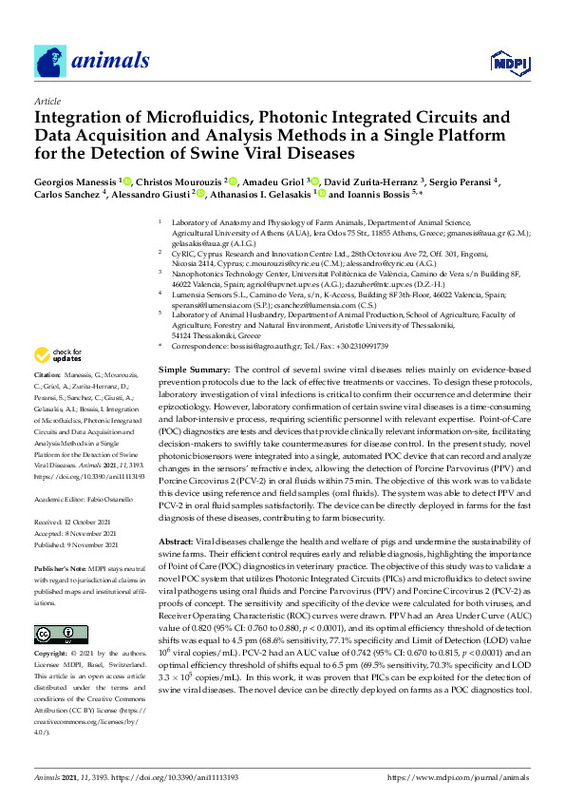JavaScript is disabled for your browser. Some features of this site may not work without it.
Buscar en RiuNet
Listar
Mi cuenta
Estadísticas
Ayuda RiuNet
Admin. UPV
Integration of Microfluidics, Photonic Integrated Circuits and Data Acquisition and Analysis Methods in a Single Platform for the Detection of Swine Viral Diseases
Mostrar el registro completo del ítem
Manessis, G.; Mourouzis, C.; Griol Barres, A.; Zurita-Herranz, D.; Peransi, S.; Sánchez, C.; Giusti, A.... (2021). Integration of Microfluidics, Photonic Integrated Circuits and Data Acquisition and Analysis Methods in a Single Platform for the Detection of Swine Viral Diseases. Animals. 11(11):1-18. https://doi.org/10.3390/ani11113193
Por favor, use este identificador para citar o enlazar este ítem: http://hdl.handle.net/10251/182982
Ficheros en el ítem
Metadatos del ítem
| Título: | Integration of Microfluidics, Photonic Integrated Circuits and Data Acquisition and Analysis Methods in a Single Platform for the Detection of Swine Viral Diseases | |
| Autor: | Manessis, Georgios Mourouzis, Christos Peransi, Sergio Sánchez, Carlos Giusti, Alessandro Gelasakis, Anathasios I. Bossis, Ioannis | |
| Entidad UPV: |
|
|
| Fecha difusión: |
|
|
| Resumen: |
[EN] Simple Summary: The control of several swine viral diseases relies mainly on evidence-based prevention protocols due to the lack of effective treatments or vaccines. To design these protocols, laboratory investigation ...[+]
|
|
| Palabras clave: |
|
|
| Derechos de uso: | Reconocimiento (by) | |
| Fuente: |
|
|
| DOI: |
|
|
| Editorial: |
|
|
| Versión del editor: | https://doi.org/10.3390/ani11113193 | |
| Código del Proyecto: |
|
|
| Agradecimientos: |
|
|
| Tipo: |
|









